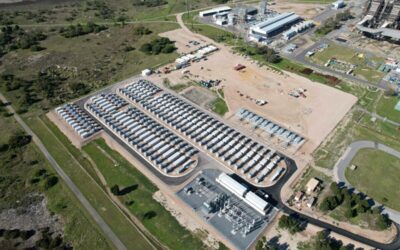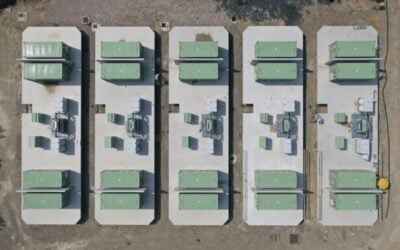Inverter manufacturer SMA Solar Technology supplied technical components, along with a division of battery company Exide. Image: SMA.
Construction has begun on what is claimed to be the world’s first modular large-scale battery storage system, a 5MW device at a research university in Aachen, Germany.
The Modular, Multi-megawatt, Multi-technology Medium Voltage Battery Storage System, handily abbreviated to M5BAT, is being built at the technical institute RWTH Aachen University. It will assess and demonstrate the appropriateness of combining a number of different battery types into one system.
The project seeks to further the integration of renewable energy into electricity networks, while it is also hoped that increased modularity will allow the system to be applied to a broader range of uses than existing large-scale battery storage devices.
Backed by the German Federal ministry of economic affairs and the environment with €6.7 million funding through a grant, the project involves researchers from RWTH Aachen University and the research centre of multi-national utility company E.ON. Also involved are the GNB Industrial Power unit of battery maker Exide Technologies, E.ON itself and solar inverter manufacturer SMA Solar Technology.
Try Premium for just $1
- Full premium access for the first month at only $1
- Converts to an annual rate after 30 days unless cancelled
- Cancel anytime during the trial period
Premium Benefits
- Expert industry analysis and interviews
- Digital access to PV Tech Power journal
- Exclusive event discounts
Or get the full Premium subscription right away
Or continue reading this article for free
GNB Industrial Power and SMA will supply technical components, as might be expected. The system will be built into a two-storey facility, covering around 500m2 of a former office building converted to its new purpose by E.ON. E.ON Energy Research Centre will assemble the batteries, with the system scheduled for completion in mid-2016.
Utility pressure
Several US utility companies have started procuring storage in ever-greater capacities, especially in regions driven by mandates such as California or Puerto Rico, or states where a conscious shift at the top level to distributed energy systems has begun, such as New York, or again California. Their European counterparts have not been as quick for the most part, with a number of high profile trials – such as the UK’s 6MW ‘Big Battery’ – and the operation of large-scale storage on the frequency regulation market in Germany.
E.ON appears however to have a fairly pro-active stance on the changing nature of energy, last year announcing a full split of its business units into two, one dealing with its conventional fossil fuels business and the other dealing with new and renewable energies. One energy storage and renewable energy industry insider who wished to remain anonymous did comment at the time that the utility was “running scared” at the speed of change towards distributed generation of non-fossil fuel energy, however a request for interview with E.ON to discuss the claim was declined at the time. In the past few weeks, the head of the company’s US operations has also publicly urged the rest of the energy industry to “embrace” president Barack Obama’s EPA Clean Power Plan.
Meanwhile, modularity of battery systems is becoming an ever-bigger question for the industry. Sizing batteries to meet the different needs of each region and application can be both expensive and tricky. One German manufacturer known primarily for its energy storage systems, ASD Sonnenspeicher, claims that with a new system that it has developed called Pacadu, batteries of different type and size can be neatly put into parallel circuits. This could open up the promise of scale and convenience for grid network operators and storage project developers, while seemingly pitting ASD in direct competition with SMA and its partners on the M5BAT project.
Utility E.ON and its energy research division announced the start of construction on Wednesday. This image and cropped cover image: E.On.





